2018
October 3rd, 2018: Human Intelligence and Experiential Learning in Materials Discovery

We have arguably reached a point in the evolution of materials chemistry where the discovery of a brand-new material or novel material property is rare. Although there will, of course, always be the occasional eureka moment, current materials research is mainly focused on the design of self-assembled material architectures that yield specific properties to satisfy the function required of an application. An inevitable question in today’s technological context, however, is the role of artificial intelligence in the materials research process. Can AI be trained to accomplish tasks and practice continual learning, intuition, and creativity, in a manner that matches or even supersedes human intelligence? See full story at: Advanced Science News.
October 1st, 2018: Green Steel: Coupling Steel with Methanol Production
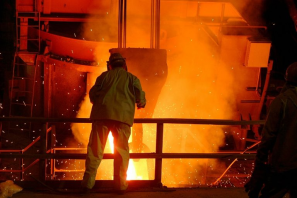
According to the International Energy Agency (IEA), the steel industry accounts for close to 30% of the direct carbon dioxide (CO2) emissions of the industry sector, which corresponds to 7% of the global CO2 emissions (data for 2014). At present, steel mills reduce their carbon footprint mainly through incremental efficiency upgrades designed to cause minimal disruption to its output; however, new research is showing that strategies focused on valorizing and utilizing CO2 may present an economic opportunity with significant environmental benefits. Michael Bender and coworkers at BASF SE, Ludwigshafen in Germany, have recently reported a techno-economic analysis for six different CO2 emission reduction scenarios in steel manufacturing. Read the full story at Advanced Science News.
September 20th, 2018: Congratulations, Alex Tavasoli, on being selected as a finalist in the MaRS Women in Cleantech Challenge!

The University of Toronto Solar Fuels Group is proud to announce that Alex Tavasoli has been selected as a finalist in the national Women in Cleachtech competition, hosted by MaRS Discovery District and Natural Resources Canada. Alex’s proposed company, “Solistra”, offers a greenhouse gas (GHG) to fuel technology that converts waste CO2 and methane into syngas using solar energy and novel, nanostructured, light-activated materials.
The Women in Cleantech Challenge seeks to identify top female innovators from across the country who are developing technologies to tackle the world’s most daunting energy and environmental challenges. Of the hundreds of applications received, 10 semi-finalists were invited to deliver their pitch live to a public audience and prestigous jury, amongst which included Margaret Atwood.
The finalists will now participate in an intensive 30-month business accelerator program, with support valued at $800,000, before competing for the $1-million prize to invest in their business.
The full list of finalists can be viewed at: http://www.womenincleantech.ca/.
August 27th, 2018: Celebrating 50 Years of Materials Research and Still Searching
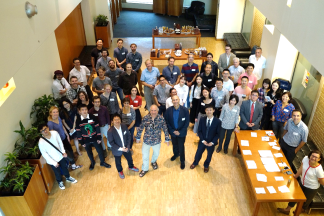
The GAO Materials Research group was delighted to host a highly interdisciplinary, intellectually stimulating, and heartfelt symposium on Saturday, August 25th, in honour of Geoffrey Ozin’s 75th birthday.
Friends, family, colleagues, students, alumni, and current group members gathered, from near and far, to celebrate the creative innovations, life-long friendships, and passion for research that Geoff has fostered over his 50-year career. The spirit of the day is best captured by Geoff’s opening words, “Let’s appreciate the moment, let’s relish the memories, let’s rise to the future, and let’s have fun today on a very special birthday of three quarters of a century.”
Thank you especially to speakers, Ludovico Cademartiri, Jennifer Chen, Yadong Yin, Mark Wilson, Hong Yang, Mark MacLachlan, Wendong Wang, Ben Hatton, and Todd Siler, for stimulating our brains and hearts with their kind and inspirational words. Thank you also to organizers Wei, Sue, and Chenxi for their commitment to organizing such a successful event, and to the department of Chemistry and ChemClub who generously sponsored this event. Finally, thank you to all who attended for making the day truly special.
August 24th, 2018: Alexander von Humboldt Award
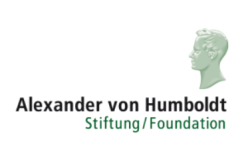
Professor Geoffrey Ozin has been awarded a three-month extension of his Alexander von Humboldt (AvH) award to work with Professor Roland Dittmeyer, Director of the Institute for Microprocess Engineering at Karlsruhe Institute of Technology, Karlsruhe Germany, on the development of high performance photocatalysts and photoreactors for converting greenhouse gas to fuels.
The AvH award is in recognition of a researcher's entire achievements to date to academics whose fundamental discoveries, new theories, or insights have had a significant impact on their own discipline and who are expected to continue producing cutting-edge achievements in the future.
July 18th, 2018: Congratulations on achieving the golden h = 100!

In recognition of his innovative and technologically relevant contributions over the past 50 years, Professor Geoffrey Ozin has achieved the ISI Golden h-index of 100. This is a remarkable accomplishment that research groups working in chemistry related topics around the globe rarely achieve. Congratulations is extended to all of Professor Ozin's past and present coworkers who helped maked this happen.
June 21th, 2018: Congratulations, Hong Wang, Lu Wang, and coworkers on your paper, Ambient Electro-Synthesis of Ammonia - Electrode Porosity and Composition Engineering!
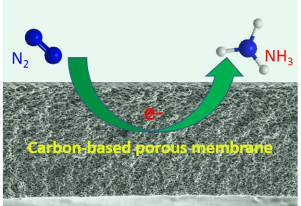
In this paper, hierarchically structured nitrogen-doped nanoporous carbon membranes (NCMs) are reported to electrochemically convert N2 into NH3 at room temperature and atmospheric pressure in an acidic aqueous solution. The Faradaic efficiency and rate of NH3 production using the metal-free NCM electrode in 0.1 M HCl solution are as high as 5.2% and 0.08 g m-2 h-1, respectively. Upon functionalization of the NCM electrode with Au nanoparticles (Au NPs), the efficiency and rate achieve a remarkable 22% and 0.36 g m-2 h-1, respectively. These performance metrics are unprecedented for the electrocatalytic production of NH3 from N2 under ambient conditions.
June 20th, 2018: Front Cover of Joule!
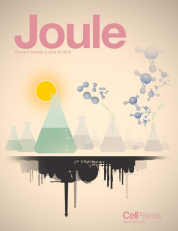
Congratulations, Lu Wang, Meikun Xia, Hong Wang, Kefeng Huang, and Chenxi Qian on your Perspective article, “Greening Ammonia: Toward the Solar Ammonia Refinery”, making the front cover of Joule. Cover art is by Chenxi Qian
June 20th, 2018: Plasmon Power for Ambient Temperature Ammonia Synthesis
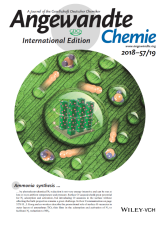
The synthesis of ammonia by photoelectrochemical N2 reduction, unlike the century old high temperature high pressure Haber-Bosch ammonia process, is not very energy‐intensive and can operate at low or even ambient temperature and pressure. In a Chinese-Canadian collaboration, spearheaded Professor Jinlong Gong and Professor Geoffrey Ozin, the promotional role of surface O vacancies in outer layers of amorphous TiO2 thin films in enabling the adsorption and activation of N2 to facilitate reduction to NH3 is described for the first time. See their recently published paper, "Promoted Fixation of Molecular Nitrogen with Surface Oxygen Vacancies on Plasmon-Enhanced TiO2 Photoelectrodes", to learn more.
June 19th, 2018: NEWS RELEASE - Canadian nanotechnology invented in Professor Geoffrey Ozin's nanochemistry laboratory and commercialized by Opalux stops couterfeiters in their tracks

Whether preventing passport fraud or currency counterfeiting, smart nanomaterials invented at the University of Toronto and commercialized by Toronto-based Opalux have locked in a new level of security.
June 15th, 2018: New Materials Discovery: Machine-Enhanced Human Creativity
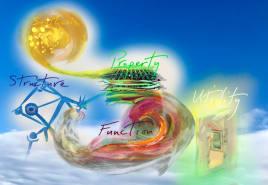
In this article, Geoffrey Ozin and Todd Siler, a long time practicing chemist and artist, ask whether machine learning will ever be creative enough to match the innate ingenuity of humans at discovering and synthesizing an entirely new class of materials.
June 1st, 2018: Congratulations, Young Li,on your paper in ACS Applied Materials and Interfaces!
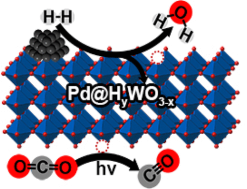
Palladium-tungsten oxide hetero-nanostructure Pd@HyWO3-x is shown to function as a high performance photocatalyst for enabling the gas-phase reduction of CO2 to CO at an impressive rate of 3.0 mmol gcat-1 h-1. A photochemical pathway operates via bandgap excitation of HyWO3-x along with photothermal contributions arising from non-radiative electron relaxation in Pd nanocrystals and the plasmon band of HyWO3-x. Kinetic analysis revealed a decrease in the activation energy for CO formation in the dark compared to the light with kinetics being more CO2 dependent in the dark to more H2 dependent in the light. Operando diffuse reflectance infrared Fourier transform spectroscopy measurements provided valuable insight into the surface chemistry responsible for the conversion of CO2 to CO formation. The Pd@HyWO3-x system provides a blueprint for rationally designing and optimizing catalysts that enable gas-phase photothermal reduction of CO2.
May 11, 2018: Congratulations Lu Wang, Meikun Xia, Hong Wang, Keyfeng Huang, and Chenxi Qian on your Joule Perspective, "Greening Ammonia toward the Solar Ammonia Refinery"
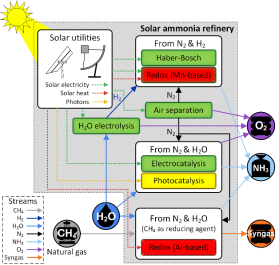
The century-old Haber-Bosch process for the production of ammonia from N2 and H2 is an energy demanding and greenhouse gas intensive, high temperature and high pressure, fossil powered process. A contemporary challenge is to replace this unsustainable process by a sustainable one that produces ammonia from N2 and H2O, powered by solar electricity, solar heat or solar photons. In this Perspective, we present an overview of current research activity and technology development in this area together with a high level energy analysis shown in the graphic of the different ways being explored to achieve the lofty goal of a 'solar ammonia refinery'.
May 7, 2018: U of T Solar Fuels Group among top six finalists announced for Ontario's Solutions 2030 Challenge

Ontario's Centres of Excellence (OCE) has announced the first cohort of finalists for Ontario's Solutions 2030 Challenge - a three-phase competition over three years designed to accelerate the development of technologies with strong potential to help Ontario meet its 2030 emissions targets as part of Ontario's Climate Change Action Plan. The intitiative is part of the province's broader TargetGHG program, which is administered by OCE on behalf of the Ministry of Research, Innovation and Science and the Ministry of the Environment and Climate Change.
May 4, 2018: U of T Solar Fuels Group awarded major funding for greenhouse gas project
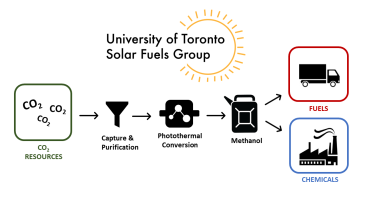
Professor Geoff Ozin and the Solar Fuels Team at the University of Toronto have been awarded close to $1 million from the Low Carbon Innovation Fund (LCIF) to translate their greenhouse gas research to scale. Reza Moridi, Ontario’s Minister of Research, Innovation and Science made the announcement at the Ontario Centres of Excellence Discovery conference on May 1. The project proposes a technology capable of recycling CO2, either from the atmosphere or from concentrated industrial sources, into value-added chemicals and fuels. Ontario’s Low Carbon Innovation Fund will help researchers, entrepreneurs and companies create and bring to market innovative low-carbon technologies. Moridi says that LCIF initiatives such as this, “will help us fight climate change while preparing industries to thrive in a competitive, low-carbon economy.” Ozin is excited to begin work on the Greenhouse Gases to Fuels project, commenting “working with the Low Carbon Innovation Fund, we intend to demonstrate that our G2F technology is an effective approach to making Ontario both environmentally sustainable and economically successful."

May 1st, 2018 - The U of T Solar Fuels Team Showcase its Greenhouse gas to Fuels Technology at OCE Discovery 2018 at the Toronto Convention Center, which is the leading innovation-to-commercialization conference in Canada. The Discovery exhibition brings together key players from industry, academia, government, the investment community as well as entrepreneurs and students to pursue collaboration opportunities, and it is with much excitement that U of T Solar Fuels Team looks forward to participating. For more information on the Discovery 2018, please visit: www.ocediscovery.com
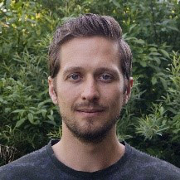
April 25, 2018 - Congratulations to Michael Ertl and coworkers for their paper in Chemistry - A European Journal: It turns out the answer lies in the soil! The synthetic version of a naturally occurring iron mineral named after a Nobel laureate (mössbauerite), which has been previously studied by geologists and soil scientists, was found to be a promising ‘iron only’ electrocatalyst for the oxygen evolution reaction (OER). In a four-way collaboration between the Universities of Bayreuth, Bochum, Munich and Toronto, the electrocatalytic performance of synthetic mössbauerite is demonstrated to be competitive with the best-known ‘iron only’ electrocatalysts. Significantly, the structure of mössbauerite offers plenty of opportunities for compositional modifications in the quest for a champion earth-abundant, low-cost, non-toxic electrocatalyst.
April 6, 2018 - Methanol Then and Now: Methanol has a long and fascinating history that can be traced to its use for embalming mummies in ancient Egypt. Today, there are over 90 methanol plants across the globe, with a production capacity of around 110 megatons. While the dominant feed stocks for making methanol continue to be natural gas, coal, biomass, and waste, there is a noticeable increase in interest in using carbon dioxide as the source of carbon for value-added chemicals and fuels.
April 5, 2018 - In Flight and Fight – The Turbulence Carbon Dioxide Causes: Recent findings indicate that excessive levels of carbon dioxide are wreaking havoc on air travel. Specifically, increasing levels of anthropogenic carbon dioxide can increase both the intensity and frequency of clear air turbulence associated with more powerful jet stream related wind shears. The phenomena arises from an increase in the temperature and density gradients between the equator and the poles induced by the combined effects of a warming troposphere and cooling stratosphere. According to recent modelling studies, climate scientists now predict that there will be a 40-170% increase in clear air turbulence incidences on transatlantic flights if the amount of atmospheric CO2 is to grow to twice that of pre-Industrial levels.
April 5, 2018 - Congratulations, Lu, Mireille, and Co-Authors, on your Solar Methanol Paper in Joule! The current fashion for synthesizing methanol continues to be the high pressure and high temperature heterogeneous catalytic conversion of synthesis gas (CO-H2) using alumina supported nanostructured copper-zinc oxide as the catalyst and fossil fuel to power the process. It is an energy intensive process with a large CO2 greenhouse gas footprint and a deleterious effect on the climate. Thus, it would be highly desirable to produce methanol in a sustainable way and use CO2 as feedstock and solar energy to drive the synthesis. Solar technologies that facilitate the efficient conversion of CO2 and H2 into methanol offer a sustainable path to the production of renewable fuels. Furthermore, since about 30% of all known chemicals come from methanol, the production of solar methanol appears to be a “greener” strategy for the chemical and petrochemical industries.In this breakthrough report in Joule, we present a “solar methanol maker”, a rod-shaped In2O3-x(OH)y nanocrystal superstructure, that can efficiently hydrogenate CO2 to methanol at atmospheric pressure with a methanol selectivity for more than 50%. The remarkable productionrate of 0.06 mmol gcat-1h-1 and excellent long-term stability of this catalyst in solar methanol synthesis makes it an interesting candidate for converting CO2 to methanol at an industrial scale in a CO2 refinery.

March 29, 2018 - Congratulations, Mireille! Mireille has received some great news, the award of a prestigious graduate scholarship from the Natural Sciences and Engineering Research Council (NSERC) of Canada to support her doctoral research in the area of solar fuels. This scholarship recognises the outstanding performance of graduate students in their PhD studies.
March 29, 2018 - Drop-In Solar Fuels from Carbon Dioxide and Water: Performance Indicators: From electrochemistry to photochemistry to thermochemistry, there exist many possible approaches to converting CO2 and H2O to liquid hydrocarbons using solar energy. However, the ever-growing variety of routes to achieving solar fuels calls for careful evaluation of their feasibility in a standardized manner. The combination of four key performance indicators, namely, product selectivity, material stability, mass conversion, and solar-to-fuel efficiency, can provide a comprehensive assessment of the technology.

March 23, 2018 - Congratulations, Jia Jia!
Jia Jia has just learned she has won the much-coveted "Chinese Government Award for Outstanding Self-Financed Students Abroad" from the China Scholarship Council. This award, founded by the Chinese government in 2003, recognises the academic excellence of self-financed Chinese students studying overseas. The award selection panel considers only students with outstanding performance in their PhD studies. No more than 500 young talents all around the world win the award each year. Well done Jia!
March 21, 2018 - Nitrogen Reduction Reactions - Fact or Artifact: Artifacts that arise from adventitious carbon contamination of catalysts used in the electrochemical, photochemical and thermochemical reduction of CO2 to synthetic chemicals and fuels, especially at low total conversions and low conversion rates, can only be authenticated through rigorous 13CO2 isotope-labeling proof-of-product experimentation to avoid the reporting of artifacts. Similarly, in the reduction of N2 to ammonia in aqueous solution using the aforementioned approaches, one must be equally diligent to apply strong checks to prevent the reporting of false-positives that can originate from impurities in the catalysts and N2 feed gas, and which require robust 15N2 isotope labeling to ensure unequivocal identification of the source of the ammonia. Graphic image courtesy of Chenxi Qian.
March 16, 2018 - Congratulations Alex Tavasoli on your Commentary in Joule, Green Syngas by Solar Dry Reforming: Killing Two Greenhouse Gases with One Stone! A photothermal dry reforming process has been developed that efficiently transforms two potent greenhouse gases, CH4 and CO2, into industrially valuable synthesis gas (a mixture of CO and H2), using a uniquely structured nickel-silica nanoscale catalyst that is impressively resistant to deactivation by coking. This exciting new discovery provides an opportunity to “kill two greenhouse gases with one stone.”
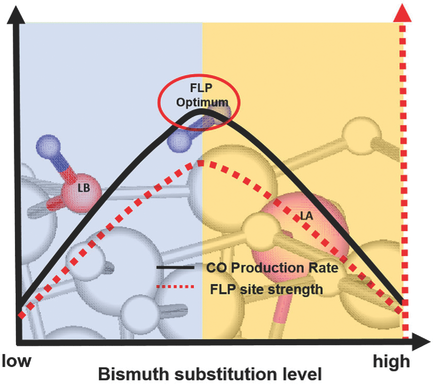
March 12, 2018 - Congratulations Yuchan Dong, Kulbir Ghuman, and Co-Authors on your Advanced Science Paper Entitled Tailoring Surface Frustrated Lewis Pairs of In2O3-x(OH)y for Gas-Phase Heterogeneous CO2 Hydrogenation by Isomorphous Substitution of In3+ with Bi3+.The excited state acidity and basicity of the surface frustrated Lewis pair, in oxygen vacancy and hydroxide defect-laden BizIn2-zO3-xOHy, can be chemically tailored, by controlling the level of isomorphous substitution of Bi(III) for In(III) in the Bixbyite crystal lattice. This makes it possible to optimize the catalytic performance of the solar powered reverse water gas shift reaction, CO2 + H2 → CO + H2O.
January 6, 2018 - Well done Ab and co-authors Kulbir K. Ghuman, Paul G. O’Brien, Mohamad Hmadeh and Amit Sandhel on your solar fuels paper published in Advanced Energy Materials, January 2018. In this work you demonstrate a highly efficient ambient temperature ‘Solar Sabatier’ process whereby CO2 hydrogenation to form CH4 is efficiently catalyzed, by nanostructured RuO2 on a silicon photonic crystal support, at the remarkably high rate of 4.4 mmol gcat-1h-1. The origin of the exceptional rate of this Solar Sabatier reaction stems from a combination of the large surface area coupled with the unique light-trapping, broadband optical absorption and photothermal properties of the silicon photonic crystal support that enhances the conversion rate of the solar powered RuO2 catalysed Sabatier reaction, CO2 + 4H2 → CH4 + 2H2O.
2017
December 27, 2017 - The U of T Solar Fuels Team has been selected as one of 20 semi-finalists from 160 applicant’s world wide, in the Ontario Center of Excellence Solutions 2030 Challenge Phase 1 competition, to find technological solutions to the greenhouse gas emissions problem in Ontario. The strategy proposed by the solar fuels team focuses on the development of light-powered processes for the conversion of CO2 to synthetic fuels, via gas-phase heterogeneous hydrogenation photocatalysis. This goal of the project is to transition a laboratory CO2-to-fuels prototype to a scaled-up CO2-to-fuels demonstration unit. Eight winning teams from Phase 1 will receive up to $250,000 in Phase 2 with 10 months to reduce their proposed solution to practice. The winning team in Phase 2 will be eligible for up to $3,000,000 Phase 3 funding to bring their transformative technology to market. The mandate of the Solutions 2030 Challenge is for winning teams and industry to collaborate and envision a path forward to tackle climate change in Ontario and around the world.
October 30, 2017 - Opalux and De La Rue Announce Partnership. Background: Andre Arsenault, Herman Miguez, Ian Manners and Geoffrey Ozin co-invented photonic color technology, in the Chemistry Department, University of Toronto. In 2006. Together they co-founded Opalux in order to develop the technology for a range of new and exciting applications.
October 27, 2017 - Tailoring CO2 Reduction with Doped Silicon Nanocrystals: Congratulations Annabelle, Wei and Chenxi as well as Ab, Yuchan and Ziqi on your Advanced Sustainable Systems paper entitled Tailoring CO2 Reduction with Doped Silicon Nanocrystals! The article can be read on the Advanced Sustainable Systems website.
Septsember 6, 2017 - One-Pot Solar Fuels: In the inaugural issue of Joule, Geoff provided a commentary on Prof. Steinfeld’s work on CO2 reduction. Their current photo-thermal reactor design implementing a CeO2 catalyst is described with insight into the chemistry of how the originally multistep process has been reduced into a single step process. The full article can be read on the Joule website.
August 15, 2017 - 50 Years of Materials Research and Still Searching: In celebration of Geoff’s 74th birthday, a vignette of his past 50 years of scientific contributions is featured here.
June 16, 2017 - Concordia’s Science Odyssey was kick-started with a lecture from Geoff entitled “Jar of Fears: Do We Want to Fight CO2 or Embrace It?” The video can be watched here.
May 15, 2017 - Congratulations Hong Wang on his VIP Angewandte Chemie Paper! The conceptual advance described in this paper is a novel strategy for the manufacture of metal-free, hierarchically structured, nitrogen-doped, nanoporous carbon-carbon nanotube composite membranes that can be utilized as a gas diffusion electrode for the large scale electrochemical reduction of CO2-to-formate.
May 11, 2017 - On May 9th and 10th, U of T’s Solar Fuels Cluster hosted the international “CO2 Solutions to Climate Change” Symposium, bringing together the world’s top scientists and engineers, all of whom are developing creative solutions to transform CO2 into useful chemicals, materials, and fuels. A variety of cutting-edge chemical, biological, computational, and materials-based strategies were presented. Science and engineering researchers, engineers and policy makers from the United States, China, Japan, the UK, and Germany laid out the full spectrum of scientific, economic and political challenges that must addressed to successfully shift towards the CO2 energy economy.
March 26, 2017 - Chinese students from Ozin group, Chenxi Qian and Wei Sun were awarded highest honor by the Chinese government at the Chinese Consulate General Toronto. Geoff praised his students and gave a speech about his views on Chinese students.
February 29, 2017 - Slow photons back in the fast lane break new ground for all solar related applications in the future. This review article, published in Advanced Materials, provides a comprehensive overview of pioneering research, present day activities and future directions aimed at enhancing the harvesting of sunlight by exploiting the unique properties of slow photons in photonic crystal materials.
January 17, 2017 - Geoff is featured in Advanced Science News as the top cited author in the new journal Advanced Science.
2016
October 28, 2016 - Photo-desalination: There is more than One Way of Winning the Battle against Climate Change. Congratulations to Miaomiao and Jia on their AEM paper! In this paper we demonstrated that the high solar thermal conversion efficiency, low cost, low-toxicity, and good chemical stability make black TiOx (x < 2) nanoparticles a potentially useful material for converting solar energy to the thermal energy for evaporation of seawater or brackish water in remote and rural areas where access to a centralized drinking water supply is unavailable.
October 26, 2016 - Congratulations to Ab, Mo and Paul on the publication of their latest paper in ChemNanoCat entitled “photocatalytic properties of all four polymorphs of nanostructured iron oxyhydroxides”.
October 7, 2016 - Laura has been featured by ACCN for her work promoting green chemistry at UofT. Reyes was one of 12 students who formed the Green Chemistry Initiative (GCI) in 2012, and has also oriented her PhD studies towards green chemistry, investigating the surface interactions of carbon dioxide and hydrogen on metal oxide nanomaterials for applications in photocatalytic CO2 reduction.
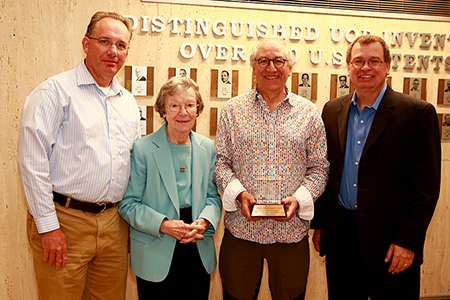
October 4, 2016 - Join the war on Climate Change: "TRANSFORMATIVE RESEARCH TO COMBAT CLIMATE CHANGE CHALLENGE WORKSHOP" scheduled on 12th October, 2016, with opening remarks by Glen Murray, Minister of the Environment and Climate Change.
September 16, 2016 - Geoff is awarded the opportunity to deliver the Fifth Annual Edith M. Flanigen Honeywell UOP Invitational Lecture in Materials Science Series, honoring his years of dedication and contributions to the field of chemistry. Previous winners are Galen D. Stucky, Mark E. Davis, Lynne McCusker and Avelino Corma.
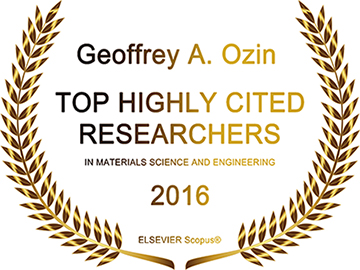
July 25, 2016 - Geoff brings up the growing CO2 problem facing us in his latest opinion piece on MaterialsViews. A breakdown of the possible short, medium, and long term solutions is presented here. The full article can be read on the Materials Views website.
July 25, 2016 - Advanced Science has received its first impact factor: 6.00. A bit of history: the front cover of the first issue back in 2014 came from our group. Coincidentally 31 years ago when Advanced Materials launched its first changable graphic-based front cover, the cover story was from our group, too. Our group cover gallery can be accessed here.
July 25, 2016 - Kulbir's perspective article titled "Surface Analogs of Molecular Frustrated Lewis Pairs in Heterogeneous CO2 Hydrogenation Catalysis" accepted by ACS Catalysis. Congratulations, Kulbir! The article discusses whether or not thinking about surface acidity and basicity in terms of FLPs is something new or something old, something useful and serves a practical purpose or something uninformative and unhelpful.
July 14, 2016 - Geoff Ozin is listed in the "2016 List of Most Cited Researchers in Materials Science and Engineering by Elsevier Scopus Data". The full list can be found on the MSES website.
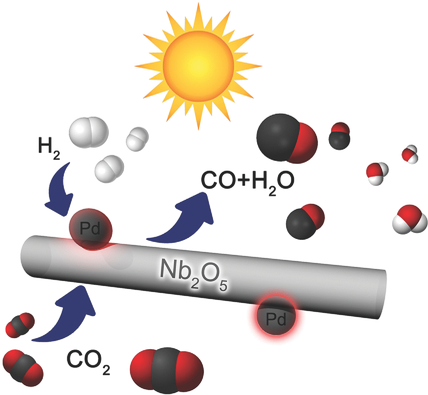
July 13, 2016 - Geoff Ozin describes the grouwing CO2 problem from the perspective of the chemical industry in his new Materials Views editorial CO2 Conundrum .
July 06, 2016 - Jia Jia and Paul G. O'Brien's work on the reverse water gas shift (RWGS) reaction driven by Nb2O5 nanorod-supported Pd nanocrystals was published in Advanced Science. This work represents a significant enhancement in our understanding of the underlying mechanism of photothermally driven CO2 reduction and will help guide the way toward the development of highly efficient catalysts that exploit the full solar spectrum to convert gas-phase CO2 to valuable chemicals and fuels. The full article can be found on the Adv. Sci. website.
June 16, 2016 - In a review authored by Wei Sun, Chenxi Qian, and Kenneth Chen of our Silicon team, recent studies in the literature on size dependent properties of mono-disperse Silicon nanocrystals is summarized. The full article can be found on the ChemNanoMat website.
June 15, 2016 - Laura’s investigation on the effect catalyst precursors play in the photocatalytic activity of In2O3 is described in her recent Chemistry of Materials paper. It was observed that the active form, a defected In2O3-x(OH)y is formed upon thermal decomposition of In(OH)3, whereas In(NO3)3 decomposition results in a more stoichiometric but less active In2O3. This study further sheds light on the importance of surface defects in heterogeneous photocatalysis. The full article can be found on the Chemistry of Materials website.
June 6, 2016 - Our paper titled "Kinetics versus Charge Separation: Improving the Activity of Stoichiometric and Non-Stoichiometric Hematite Photoanodes Using a Molecular Iridium Water Oxidation Catalyst" was published in J. Phys. Chem. C. Congratulations to Jon Moir! The full article can be found on the ACS website with a subscription.
May 23, 2016 - An innovative strategy is described for synthesizing a new class of porous near infrared photoluminescent organic-inorganic hybrid materials by chemically incorporating hydrogen-terminated silicon nanocrystals into porous polyhedral oligomeric silsesquioxanes (POSS) frameworks while maintaining the integrity of both the POSS cages and silicon nanocrystals intact, an advance that bodes well for applications in the fields of advanced materials, gas adsorption media, and biomedicine. Congratulations to Dongzhi Chen! The full article can be found on the Wiley website with a subscription.
May 12, 2016 - Study on In2O3-x(OH)y Nanocrystal Superstructures for Photocatalysis of CO2 Reduction Published in ACS Nano. Congratulations to Le He! The full article can be found on ACS website with a subscription.
April 25, 2016 - The latest issue of C&EN features our group's work with frustrated lewis pairs on the surface of In2O3 and how it enhances activity for the reverse water-gas shift reaction. The full article can be found on C&EN's website with a subscription.
April 8, 2016 - In a new Material Views editorial titled "Titania mania - peering into the heart of photocatalysis", Geoff wrotes about a study using 4D ultra-fast electron diffraction to observe how the structure of a photocatalysis changes in the excited state and the implication this technique can have in the field of photocatalysis. The full article can be found here.
March 30, 2016 - The research of the Solar Fuels Cluster on fixing CO2 as chemicals and fuels is a feature article in the March 2016 issue of the UofT Magazine. The full article can be found here. The March issue of UofTMagazine can be found on the UofTMagazine website.
February 10, 2016 - Geoff Ozin discusses strategies for "fixing" CO2 in a Materials Views editorial.
February 1, 2016 - In a new C&EN Perspective, Geoff Ozin reflects on on the birth and growth of nanochemistry.
2015
December 15, 2015 - Geoff Ozin discusses the UofT Solar Fuels Cluster in a special editorial for Materials Views.
November 26, 2015 - The University of Toronto Solar Fuels Cluster has been highlighted in a feature article by UofT News.
May 5, 2015 - Geoff Ozin was awarded the 2015 Royal Society of Chemistry Centenary Prize for his work in defining, enabling and popularising a chemical approach to nanomaterials for innovative nanotechnology in advanced materials and biomedical science. Geoff delivered Centenary Lectures at Cambridge University and Imperial College London University on 'Solar Powered CO2 to Fuel'.